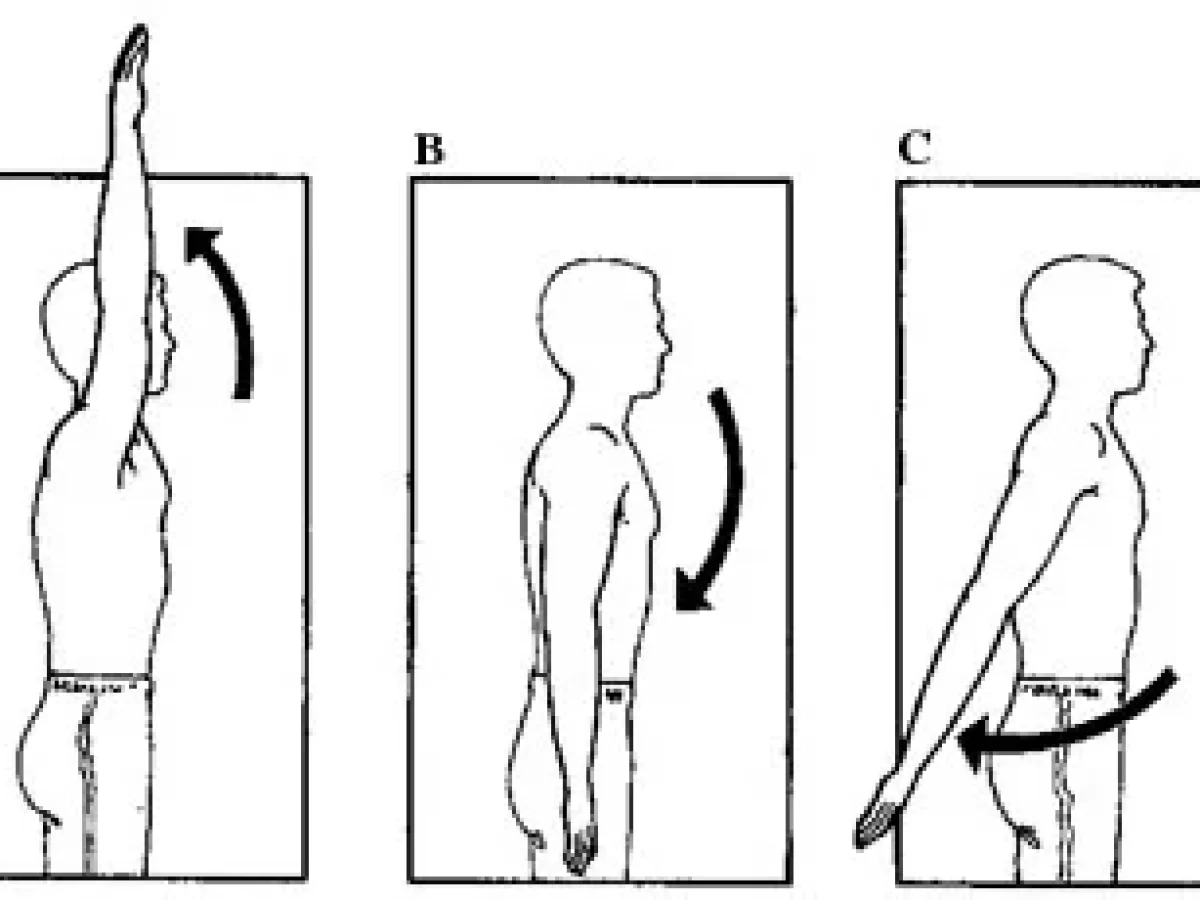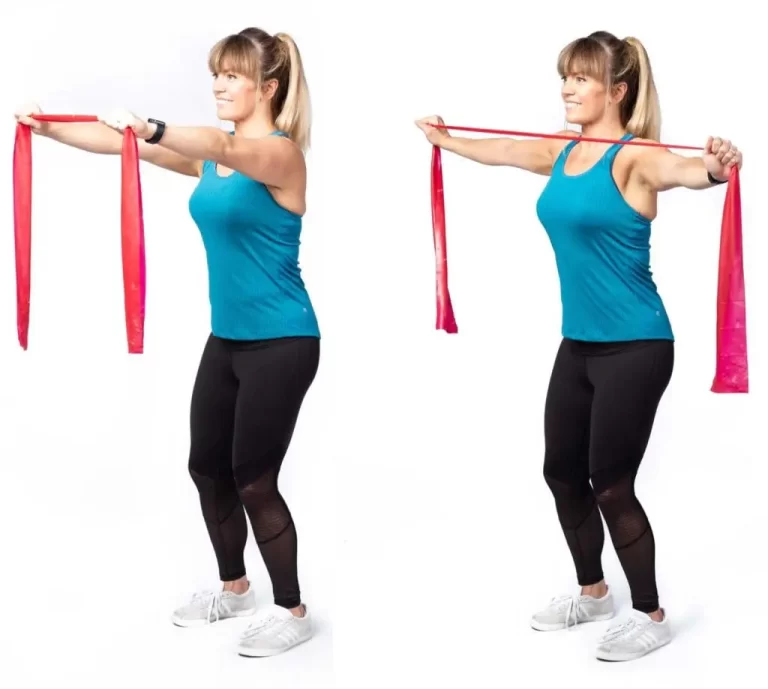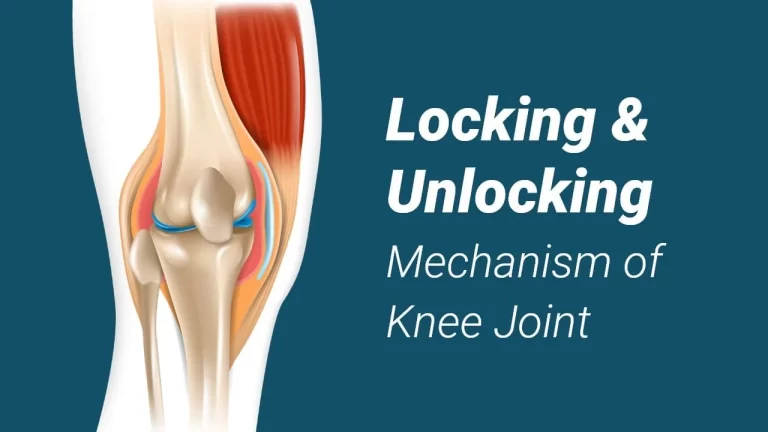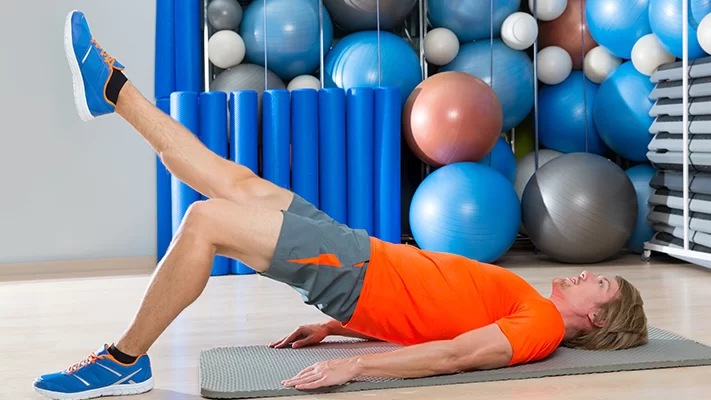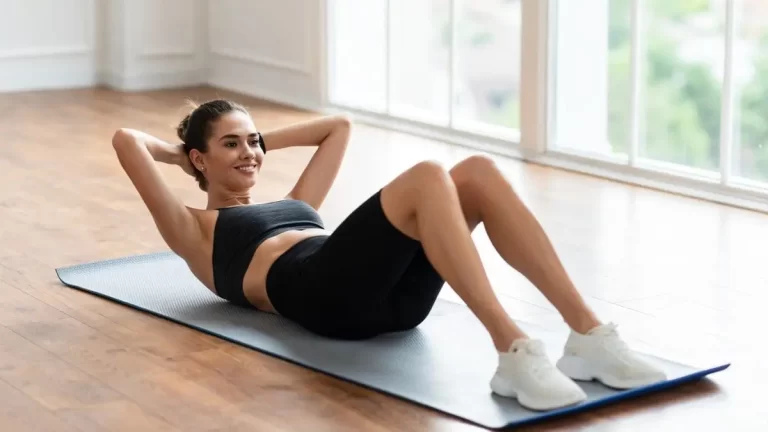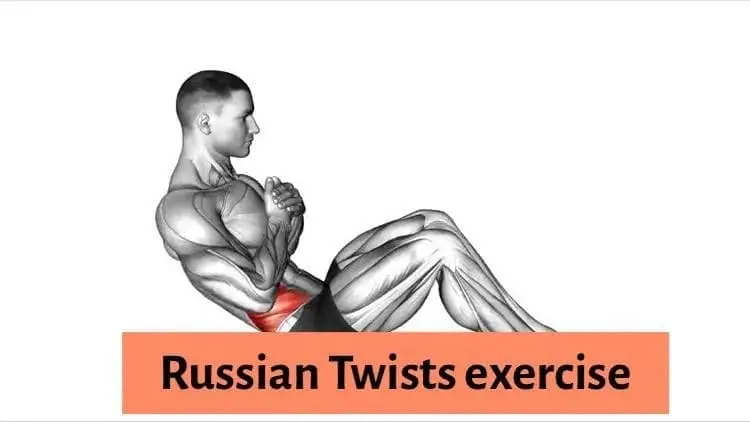Shoulder Range Of Motion Exercises
Introduction
If you are experiencing limited mobility in your shoulder and arm due to a shoulder condition, your healthcare provider may prescribe active range of motion (ROM) exercises. These exercises require no external assistance and are performed by you using your muscle strength and power. This can help improve your overall muscular function and strength around your shoulder, which is especially important for patients recovering from shoulder surgery or a shoulder/elbow injury.
Individuals experiencing shoulder pain may find relief and improved shoulder strength and ROM through physical therapy. A physical therapist can perform shoulder special tests to determine the cause of your shoulder pain and contribute to a safe and effective exercise program to help you restore normal ROM in your shoulder.
Many people with shoulder pain experience a loss in ROM around the shoulder joint, and those who have had shoulder surgeries such as rotator cuff or labrum repair may also experience decreased shoulder ROM.
The process of restoring normal, pain-free ROM to your shoulder usually begins with passive ROM, in which you are not required to use your muscle strength. Passive ROM exercises may involve the use of shoulder pulleys to help regain passive ROM. After passive ROM is restored, you may progress to performing active-assistive ROM exercises before finally transitioning to active ROM exercises like those included in this program.
This step-by-step guide features exercises designed to help you regain active ROM in your shoulder.
What Causes Limited Mobility in the Shoulders?
The complete range of motion a joint can achieve is called mobility. Decreased mobility of the shoulder can be caused by several factors, including tightness within the shoulder due to a previous injury or weakened muscle strength.
Shoulder mobility limitations are frequently caused by some of the following factors:
- Shoulder Impingement
- Rotator cuff tears
- Frozen shoulder joint
- Overuse of the shoulder joint
- Inactivity of the shoulder joint
To get an accurate diagnosis of your restricted shoulder mobility, it’s advisable to get in touch with your physical therapist and arrange for a special test to be conducted that focuses specifically on the range of motion of your shoulder. With consistent exercise and proper care, you can achieve a normal range of motion for your shoulder.
General advice
The shoulder exercises provided can assist in enhancing your shoulder’s range of motion. In addition, it is crucial to maintain the elbow, wrist, and hand’s range of motion on the affected arm. To avoid exacerbating the arm pain, refrain from lifting heavy objects.
If you have undergone surgery, it is critical to keep your incisions clean and dry, utilizing a waterproof dressing while showering until they have healed.
Following surgery, your physiotherapist can recommend appropriate exercises for you and guide when to progress to the next level.
Shoulder Range Of Motion Exercises
Active Shoulder Abduction
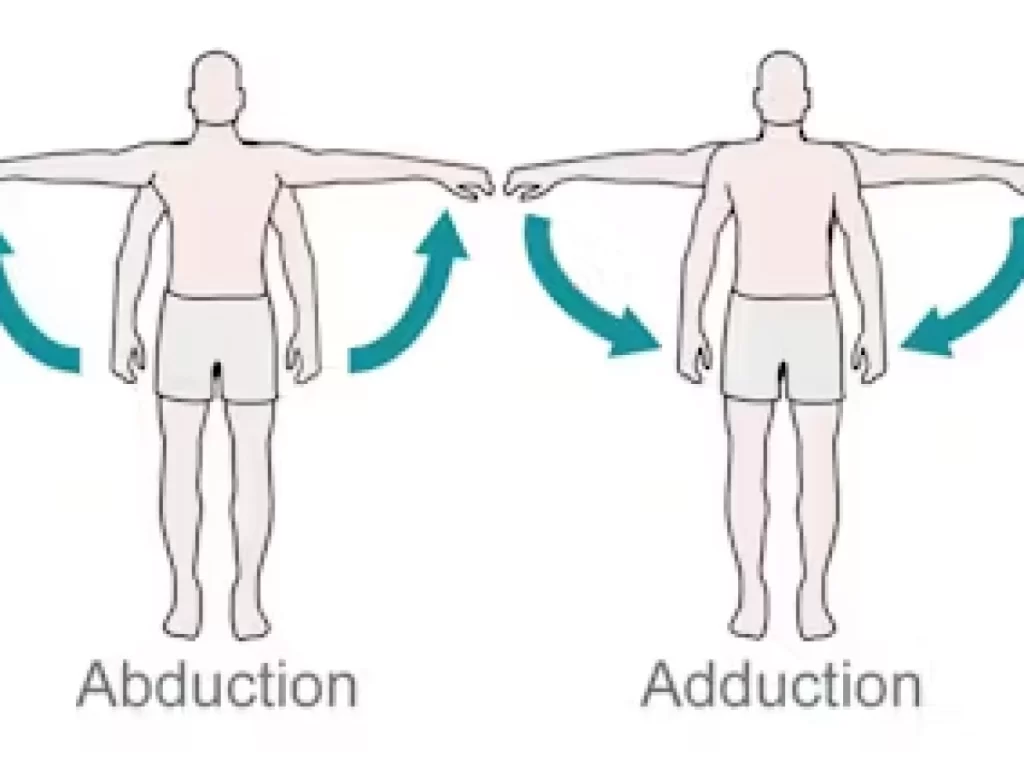
To start your journey towards a normal range of shoulder motion, the most effective exercise is active shoulder abduction.
This exercise is less strenuous and involves lying on one side with your problematic shoulder on top.
- Begin by lying comfortably with your upper arm elbow straight and your thumb pointing towards the ceiling. Slowly lift your arm from your hip towards the ceiling until it reaches its abduction range, keeping your arm straight and in line with your body and your thumb pointed towards the ceiling.
- Once you’re in this position, move your shoulder through its pain-free shoulder range of motion. Slowly lower your arm to its resting position on your hip. Repeat the exercise 8 to 12 times and then move on to the next one.
- If you experience any worsening pain in your arm or shoulder at any time during your exercise routine, stop immediately and contact your healthcare provider before continuing with any similar stretching exercises.
Active Horizontal Abduction
Performing the next exercise, known as a horizontal abduction, is quite similar to the first one.
To start with this exercise:
- Lie on your side with the shoulder you want to target on top.
- Ensure that your arm is straight and your shoulder is flexed so that your arm is parallel to the floor and out in front of you.
- Gradually lift your arm until it points towards the ceiling in an active external rotation. Hold this position for one to two seconds before slowly returning your arm to its starting position.
- Through a pain-free shoulder ROM, repeat the lateral rotation 8 to 12 times while keeping your elbow straight.
Active Shoulder External Rotation
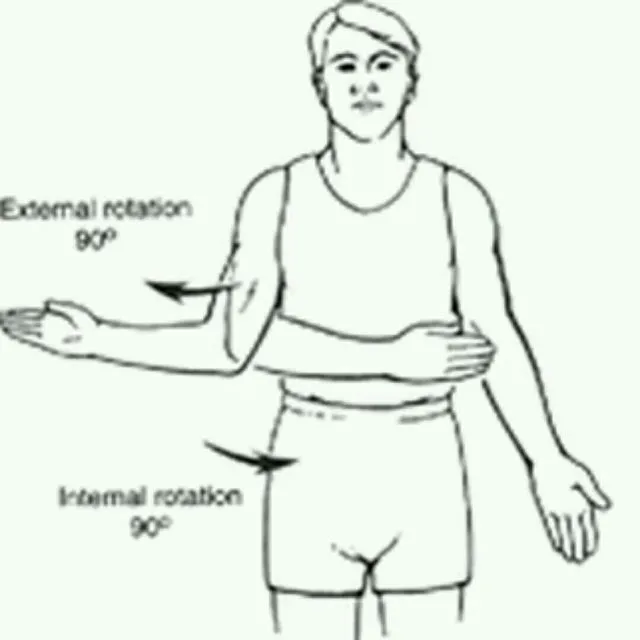
Performing an active shoulder external rotation can effectively enhance your shoulder range of motion and active range mobility. For this exercise, lie flat on your back, with your knees comfortably bent towards the ceiling and your feet resting flat on the ground.
To begin the exercise, keep your target shoulder’s elbow against your side with your elbow bent at a 90-degree angle. Using a long stick or cane in your opposite hand, apply pressure to the hand of your affected arm to induce external rotation.
Hold this position for 10 seconds and then repeat the external rotation exercise for 8 to 12 times before relaxing.
Arm Swings
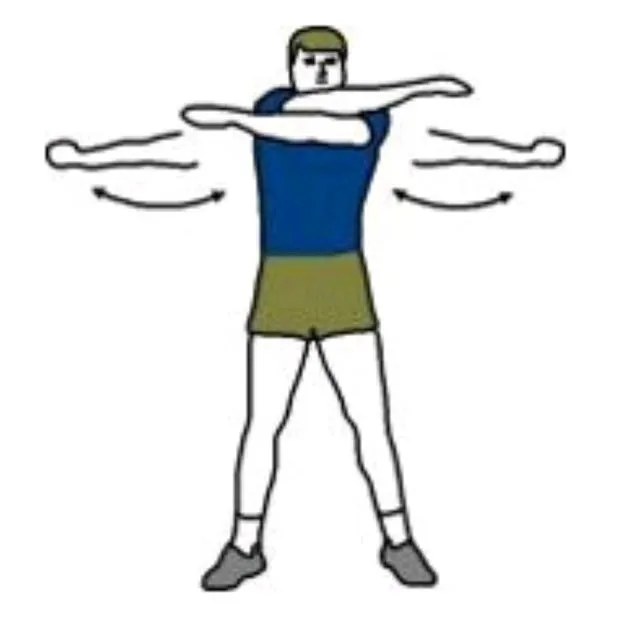
Arm swings performed while standing are a highly dynamic exercise that can enhance blood flow to your shoulder joint and involve rotational movement of your arms. Integrating this exercise into your warm-up routine before upper body workouts can result in improved mobility and flexibility in your shoulders and upper back.
- Start by standing upright with your arms straight and positioned by your sides.
- Activate your core muscles and gradually rotate or swing your arms forward until they reach their abduction range without causing any pain in your shoulder. By raising your arms, your joint can stretch into a comfortable shoulder flexion and normal range of motion.
- While performing this exercise, ensure that you do not elevate your shoulders. Return your arms to their initial position and repeat the movement for 30 to 60 seconds.
Shoulder Pass-Through
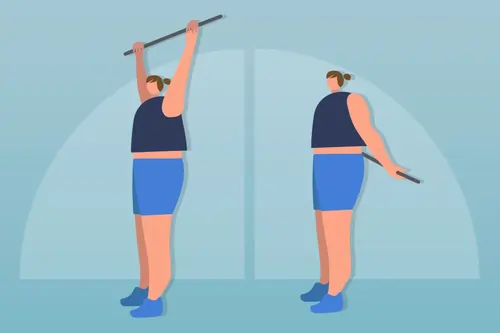
To improve joint mobility and achieve a normal shoulder range, you can try incorporating the shoulder pass-through exercise which also engages the surrounding shoulder muscles like the teres minor. This exercise necessitates the use of a long, easily gripped stick such as a broomstick or PVC pipe.
Begin by standing with your feet shoulder-width apart and your arms in front of your body. Hold the stick with an overhand grip and ensure that your palms are facing downward while keeping your arms slightly wider than shoulder-width. While exercising your teres minor, make sure that the stick remains parallel to the floor as you engage your core to gradually raise the stick above your head.
Keep your arms straight and lift them to the highest point that feels comfortable to you. Take a few moments to remain in this stance, then take a few steps back to your starting position.
Repeat this exercise five times.
Reverse Fly
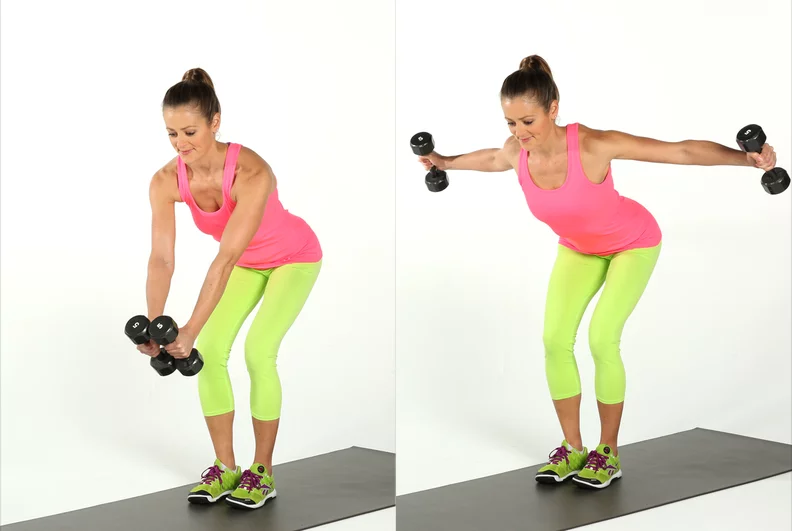
The exercise known as the reverse fly is a bit complex as it focuses on the upper back and thoracic muscles, providing stability to the shoulder joint. To perform this exercise, you will require a set of light dumbbells.
To start the exercise, take one dumbbell in each hand and stand with your feet shoulder-width apart. Slightly bend your knees and engage your core muscles to lean forward at the waist. Keep your back straight and arms extended with a slight bend in each elbow.
With your palms facing down, lift your arms away from your body by squeezing your shoulder blades together. When you reach shoulder height or the highest point you can comfortably reach with your shoulder blades, stop, and slowly return to the starting position.
Do not proceed if you experience any pain in your shoulder. Complete 3 sets of 10 repetitions of the exercise.
Dumbbell Rotation
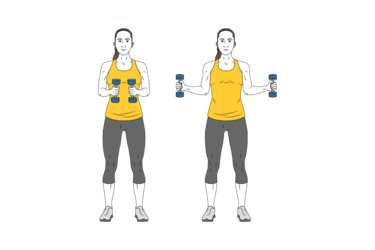
The dumbbell rotation exercise involves using a light dumbbell, as the name suggests. This exercise can help warm your shoulder before executing overhead and throwing motions, as long as you have a normal shoulder range.
Begin by standing with your feet shoulder-width apart before beginning this workout. Hold the dumbbell and raise your arm until your elbow is at shoulder height. Keep your palm facing the ground and bend your elbow to a 90-degree angle.
Next, slowly rotate your shoulder to lift your upper arm and weight to the highest point towards the ceiling while maintaining the proper position. After that, return to the starting position slowly and repeat the exercise for 2 to 3 sets of 12 repetitions on each side.
High-to-Low Rows
Perform high-to-low rows using a resistance band or cable machine to strengthen the upper back and thoracic muscles.
Attach a resistance band to a sturdy object above your shoulder height and kneel on one knee while holding the band with your opposite hand. You can choose to rest your other arm at your side or on your hip.
While keeping your torso and arm straight, slowly pull the band towards your body. The easiest way to complete the motion is to concentrate on squeezing your shoulder blades together. After completing the motion, return to the starting position and repeat the exercise 10 times for 2-3 sets on each side.
By following these exercises and other recommendations from your physical therapist, you will be able to regain your normal range of motion in no time!
Sidelying Shoulder External Rotation Exercise
If you don’t mind, I can rephrase each sentence of the text below without adding or removing any information. Lie on your side with your elbow bent and kept close to your body.
Active shoulder external rotation is a highly recommended workout to enhance the use of your rotator cuff muscles. This exercise is particularly useful after rotator cuff surgery or a shoulder injury; it can help improve rotator cuff strength or neuromuscular control of this muscle group. It is important to consult with your healthcare provider and physical therapist to ensure that this exercise is appropriate for you.
To start this exercise, lay on your side with the targeted shoulder on top. Ensure that your elbow is bent to a 90-degree angle and remains close to your body. Your hand should rest comfortably before your navel, and your elbow should remain at your side throughout the exercise.
Sidelying Shoulder Internal Rotation Exercise
To begin active shoulder internal rotation, position yourself lying on one side with your bottom elbow bent at a 90-degree angle.
Ensure that the shoulder you intend to exercise is on the bottom side and slightly moved forward from under your body to avoid direct pressure on your arm or elbow.
Maintain your elbow in a 90-degree bent position while keeping your palm facing upwards.
Shoulder Internal Rotation Exercise
Start by slowly rotating your shoulder while keeping your elbow bent and raising your hand. As you do so, ensure that the range of motion is free of pain. Once your hand reaches your navel, pause for two seconds before gradually lowering it back to the starting position.
Repeat this exercise 8 to 12 times, making sure that you don’t feel any pain or discomfort.
When you find the exercise becomes easy, you can progress to using free weights or resistance bands to strengthen your shoulder and rotator cuff. However, it’s important to consult with your healthcare provider or physical therapist before advancing your shoulder exercise program, to ensure safety.
Pendulum exercise
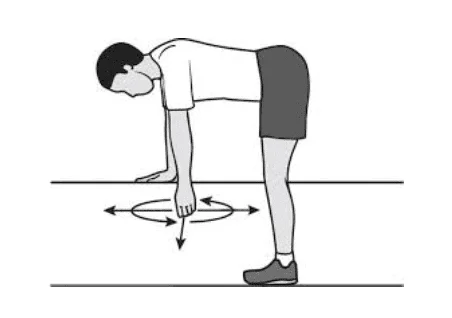
Begin by bending over at the waist and allowing your arm to hang down. Utilize your body to initiate movement and gently swing your arm in a circular motion, both forward and backward.
Shoulder shrug
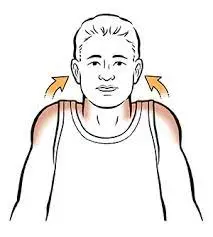
Illustrated in the image, lift your shoulders upwards.
Shoulder blade pinches
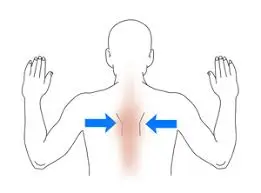
The first step is to bring your shoulder blades backward and together, as shown in the illustration.
Isometric internal and external rotation
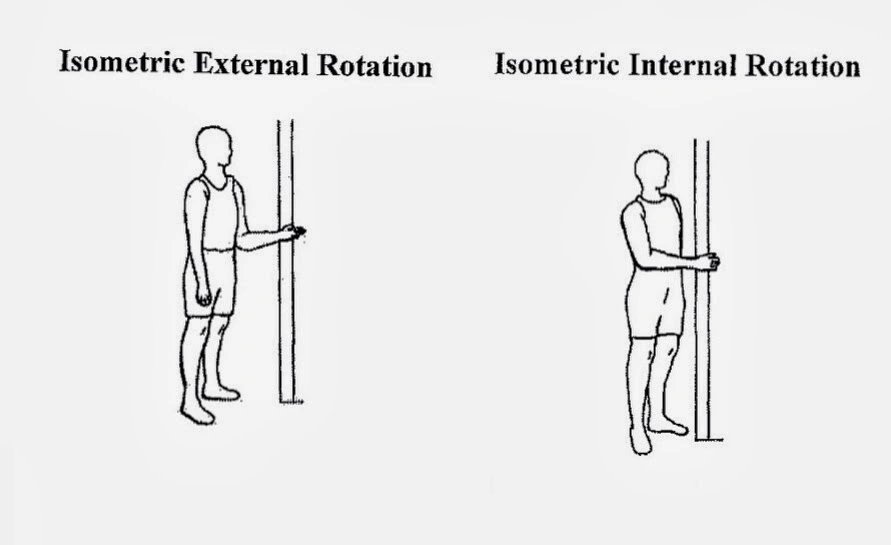
To perform an exercise for internal or external rotation, stand in front of a doorjamb or the corner of a wall. Keep your elbow close to your body and bend your forearm so that it creates a right angle with your arm. For internal rotation, place your palm against the wall with your thumb pointing upwards.
For external rotation, place the back of your hand against the wall with your thumb pointing upwards. Then, apply pressure by pushing or pulling against the wall and hold for 5 seconds.
Ball squeeze exercises
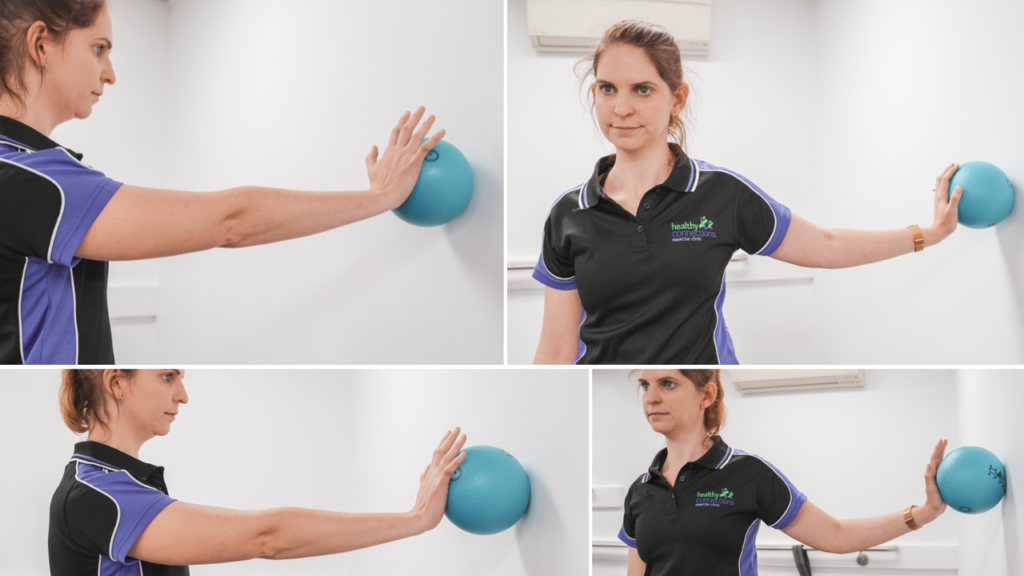
Squeeze a rubber ball or a tennis ball and hold it for 5 seconds.
Summary
The human body’s most mobile joint is the shoulder! When functioning properly, joints like the shoulder can offer a broad range of motion, allowing for shoulder flexion, external rotation, and internal rotation without any discomfort. However, overuse or underuse can lead to shoulder pain and restricted mobility, affecting this healthy range of motion.
To maintain joint health and promote healing, there are several exercises for shoulder range of motion (ROM) that you can perform. Your physical therapist may suggest certain exercise routines to help you regain your normal range of shoulder motion and alleviate any active pain in the area.
FAQs
What is shoulder ROM exercise?
You can perform Active Range of Motion Rotator Cuff Exercises by bending your elbow to a 90-degree angle and gradually rotating your shoulder to move your hand up toward your navel. It is important to ensure that the range of motion (ROM) is free of any pain during the exercise. Once your hand reaches your navel, hold this position for a couple of seconds before gradually lowering your hand back to the starting position.
What are the 6 ranges of motion for the shoulder?
Six shoulder movements were recorded for each participant, with the highest values measured for external rotation, internal rotation, flexion, extension, abduction, and horizontal abduction. A statistical analysis was conducted using a three-way repeated measures design, with two factors between subjects (age group and sex) and one factor within subjects (arm).
Why is shoulder ROM important?
The comprehension of the range of motion and strength patterns of the shoulder musculoskeletal system among young athletes in various sports may help in the creation of injury prevention screening procedures and the advancement of conditioning and rehabilitation programs that cater to the specific demands of each sport or the dynamic upper extremity demands of the athletes.
Which four categories of range of motion are there?
Passive, active, and active-assistive ROM are the three types of exercises that focus on the range of motion. The passive range of motion refers to the movements achieved through external means, such as massage or physical therapist-assisted movements.
What is full ROM training?
Moving your joints through their complete range during an exercise is known as a full range of motion (ROM). This can be achieved by doing a squat with your thighs parallel to the floor. On the other hand, when you only move through a portion of that range, it’s called partial ROM. For example, performing a half squat without going below parallel.
References
- Which Shoulder Range of Motion Exercises the Most Effective? Bergen Chiropractic. https://bergenchiropractic.com/what-are-the-best-range-of-motion-exercises-for-the-shoulders/
- Shoulder Active Range of Motion Exercises. Verywell Health. https://www.verywellhealth.com/shoulder-active-range-of-motion-exercises-2696619
- Shoulder range of movement exercises. (n.d.). Cambridge University Hospitals. https://www.cuh.nhs.uk/patient-information/shoulder-range-of-movement-exercises/
- Shoulder range of motion exercises. (n.d.). https://www.bostonsportsmedicine.com/rehabilitation-protocols/shoulder-range-of-motion-exercises/

